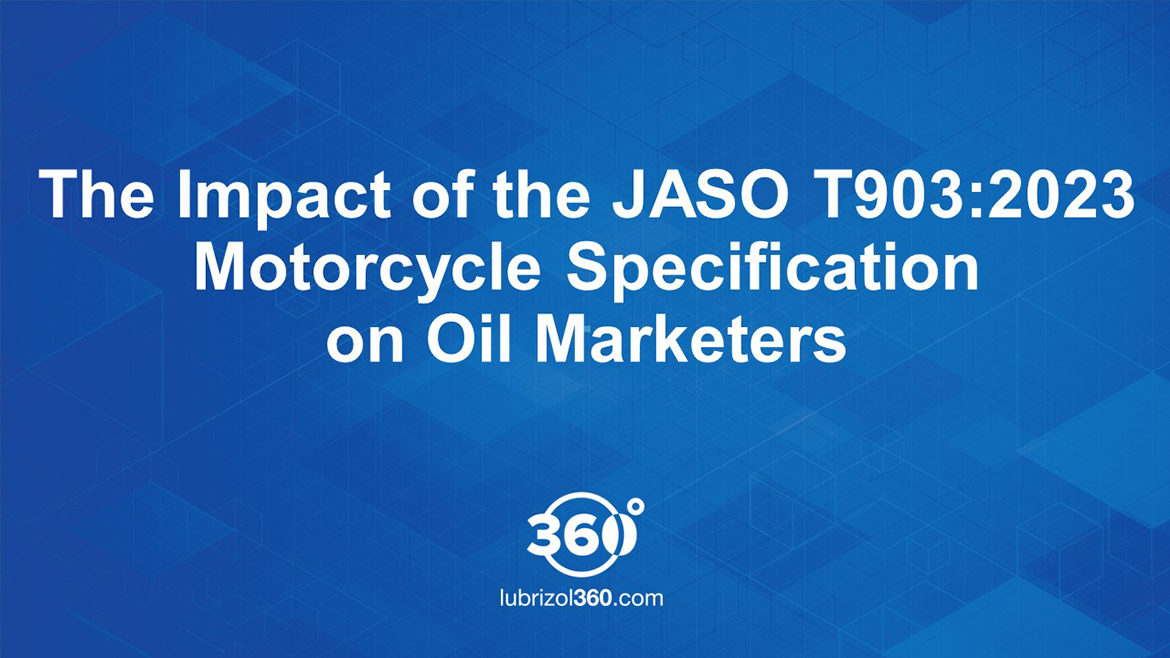The tightening of emissions limits has direct implications upon today’s motorcycle oil. In this article, we discuss how OEM hardware changes are leading to the need for dedicated motorcycle additives which are compatible with the latest hardware. Of particular concern is the exhaust catalyst, which is sensitive to certain additive chemistry.
The introduction of tighter emissions standards around the world has led to motorcycle original equipment manufacturers (OEMs) making hardware and aftertreatment device changes.
Euro 5 emissions norms are mandated in Europe and through similar specifications in other countries such as Japan, Brazil (PROMOT 5), and Taiwan. Countries across Southeast Asia are also following suit, with Thailand already at Euro 4. In India, April 2023 sees the introduction of Bharat Stage VI (BS VI) - Part II, with a further tightening of its already stringent emissions limits and mandating that all newly registered motorcycles must be fitted with an onboard diagnostics device (named OBD-II). The device monitors the emission levels of the motorcycle in real-time and alerts the owner through a visible warning display if emissions fall outside of permitted levels.
Complying with stricter emissions norms has led motorcycle OEMs to introduce a series of changes in motorcycle hardware, especially in the single-cylinder air-cooled commuter bikes, which cover a large percentage of the motorcycle segment across the world.
In addition to moving from carburetor to port fuel injection technology to improve combustion efficiency, another significant change in the hardware is the upgrade of after-treatment devices to use efficient three-way catalysts. The three-way catalyst helps in meeting the stringent emission limits by converting the exhaust gases into less harmful components through chemical reactions. The desired reactions are catalyzed by dispersions of active precious metals in the wash coat of the catalyst. However, phosphorus coming from motorcycle engine oil can act as a poison to the precious metal active sites in the exhaust catalyst, thereby rendering it less effective over time. In the case of BS-VI Part II in India, any loss in catalyst efficiency through poisoning of the active sites would be clearly visible to the motorcycle rider through the OBD-II display system mentioned earlier in this article. Understanding that premature failure of exhaust catalysts presents a potentially significant warranty liability to the OEMs and a big potential problem to the end users, it is vital to choose after-treatment catalyst compatible engine oil technology as the right oil for these latest hardware applications.
Additionally, phosphorus volatility (evaporation loss) is found to be higher in motorcycles because of the severe high temperature operating conditions to which the oil is exposed. This means oils with lower phosphorus content, along with minimized volatility of phosphorus, are needed for optimal catalyst durability. However, given the motorcycle oil must simultaneously satisfy the durability requirements of the engine, clutch and gears, it is especially important that any changes to the motorcycle oil formulation do not compromise engine wear and gear protection.
Our View
Traditional additive chemistries used for formulating motorcycle oils typically contain higher amounts of phosphorus to provide adequate protection for the motorcycle transmission.
It is anticipated that the next JASO upgrade will factor in the latest emission norms and changes in motorcycle hardware and place more stringent limits on phosphorous content to maximize catalyst durability. Oil marketers need to ensure their motorcycle oil portfolio is in line with this move. Using dedicated motorcycle additives that are compatible with the latest generation hardware catalyst systems, specifically, products that are sensitive to phosphorous in the additive chemistry, is critically important.
The move toward tighter emissions standards provides oil marketers with the opportunity to offer higher performance oils. Dedicated motorcycle additive chemistry with the correct levels of phosphorus and the right type of phosphorous to keep it in the engine and off the catalyst, supported with solid testing and proof of performance, is required to meet the demands of the unique design and operating severity that modern motorcycle hardware designs require.
For more information on motorcycle engine oils, contact your Lubrizol representative.



.jpg?h=658&w=1170&la=en&hash=1AEFFE4F0D96D91AD1D573C5986A3D30)
.jpg?h=658&w=1170&la=en&hash=F051DD2E78BEB30AA9C87A6F3D2BB06D)

.jpg?h=658&w=1170&la=en&hash=2DEEF13172DE3CF243E21672AE444A02)


